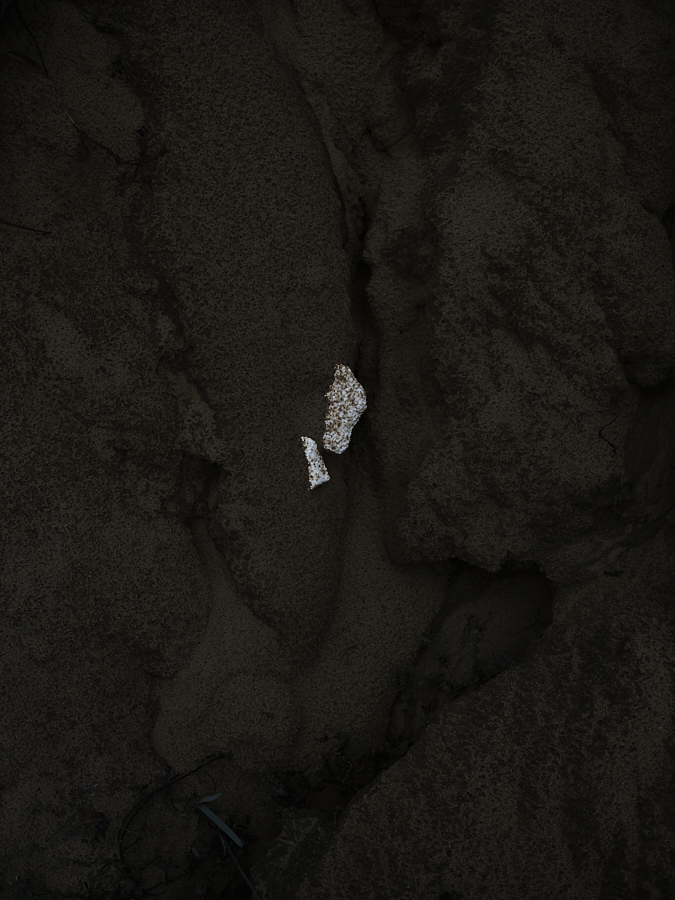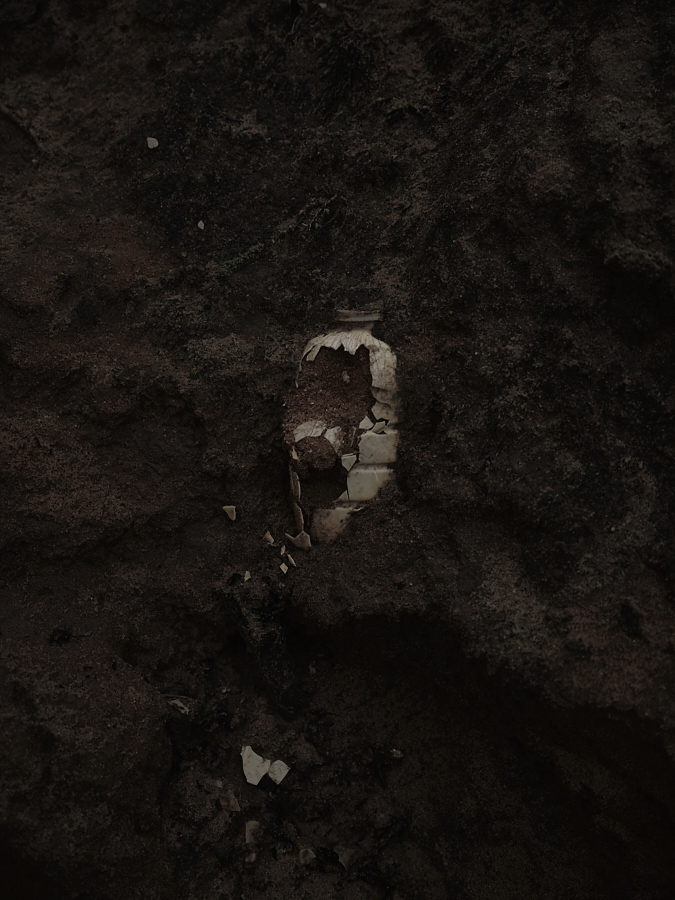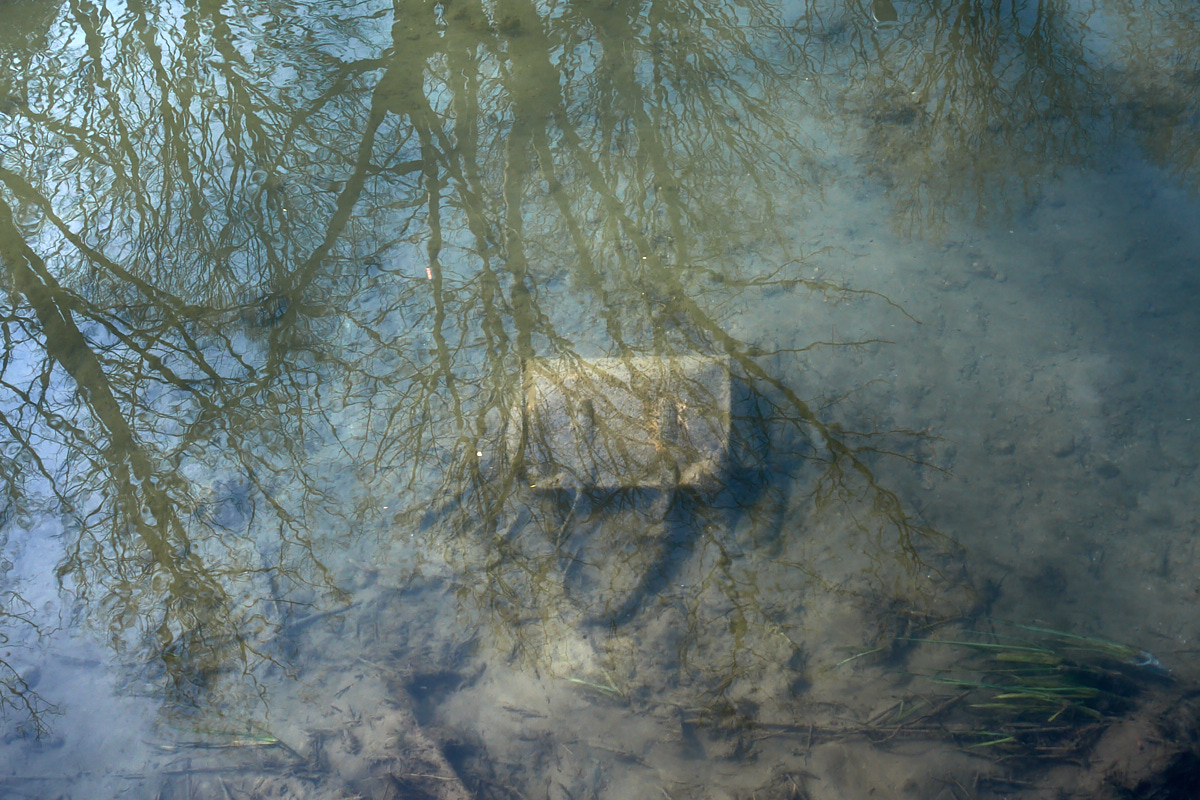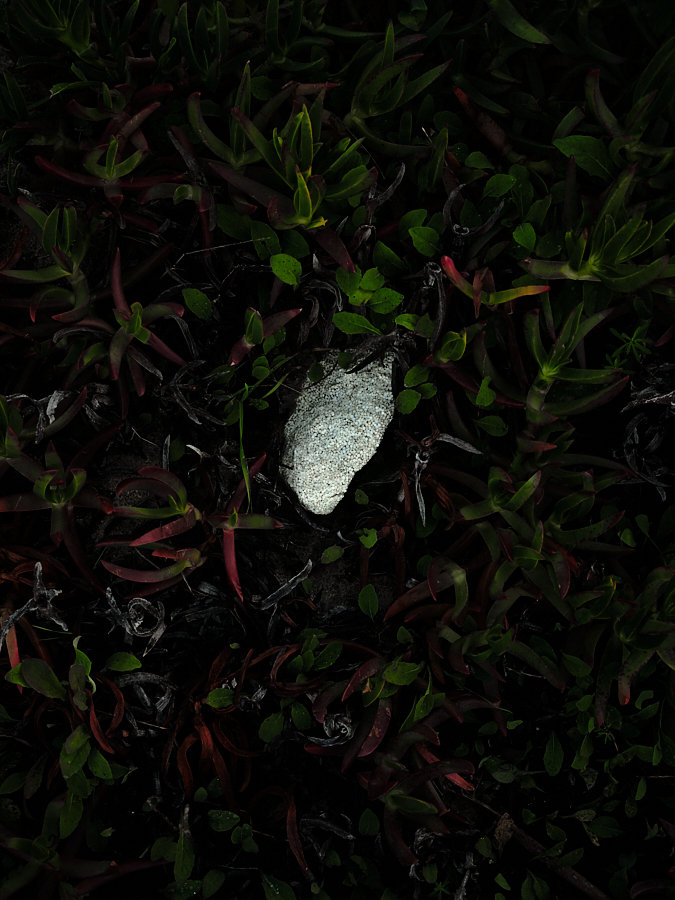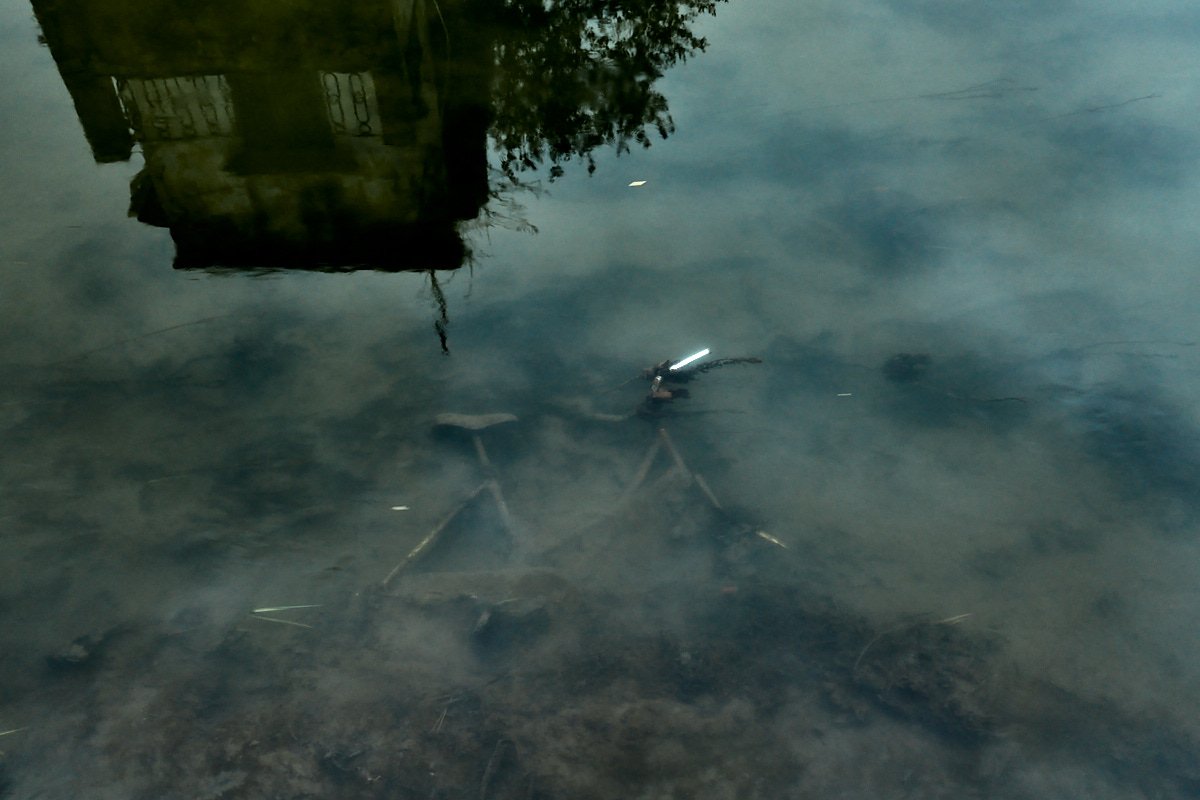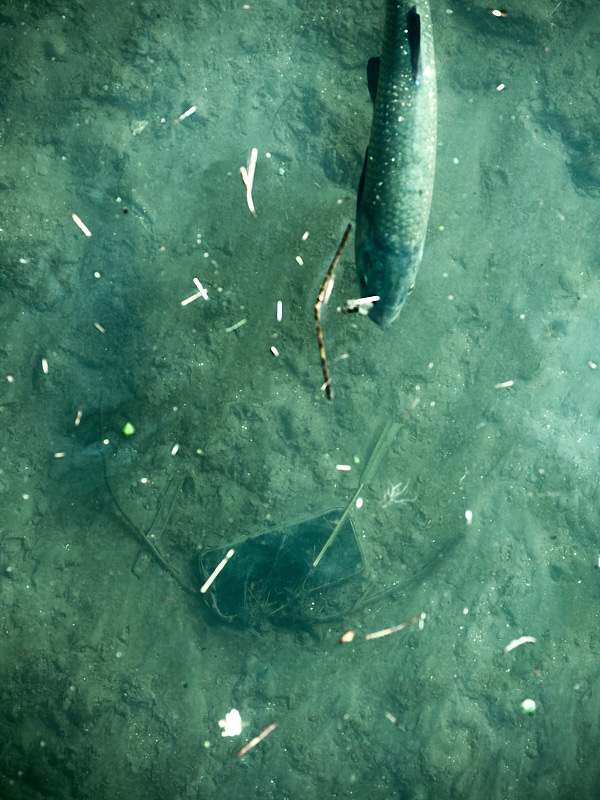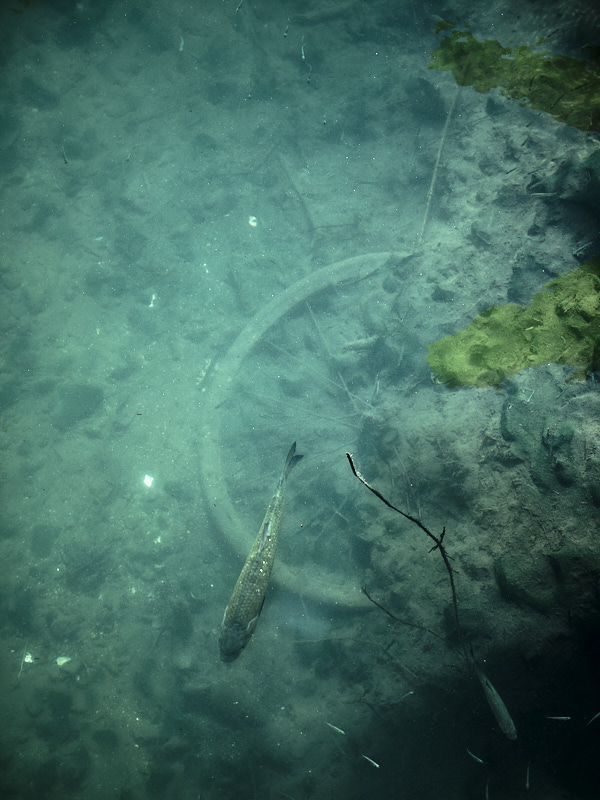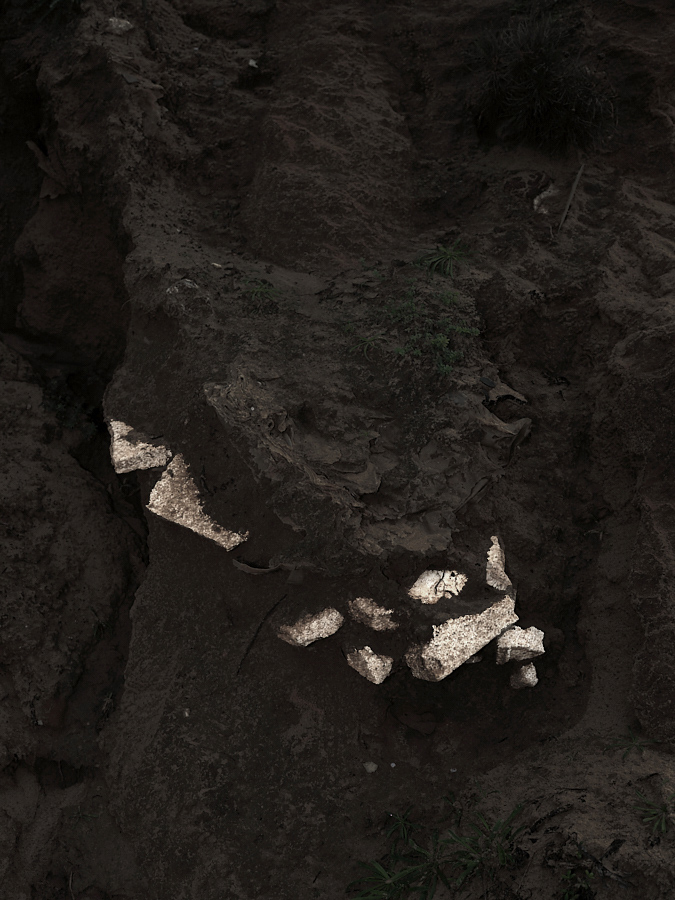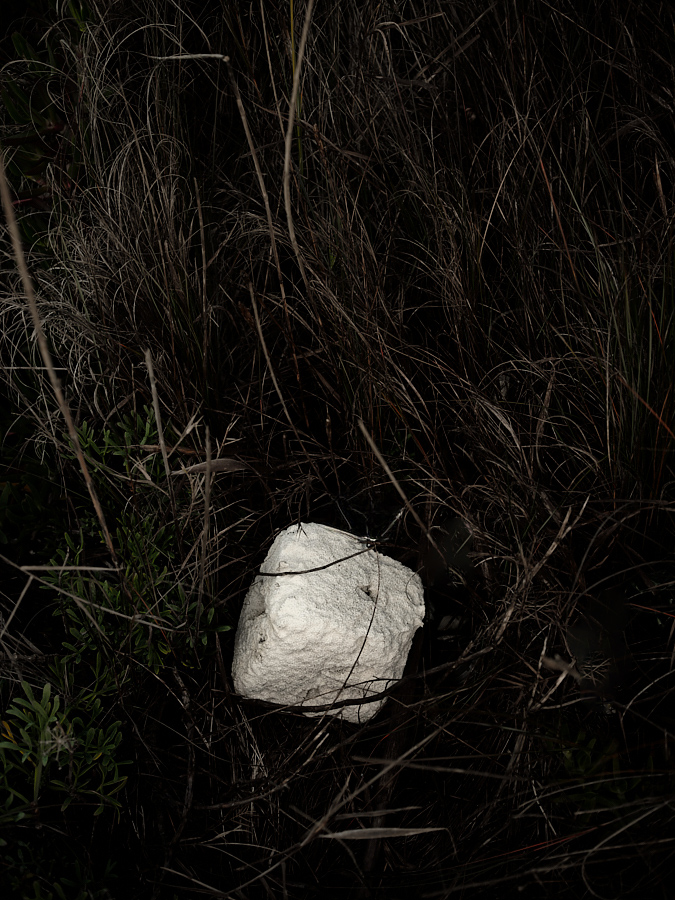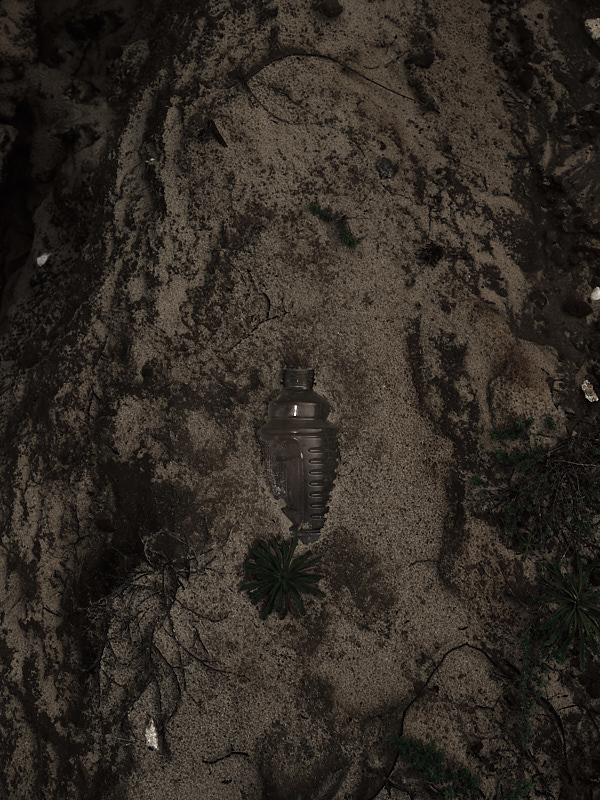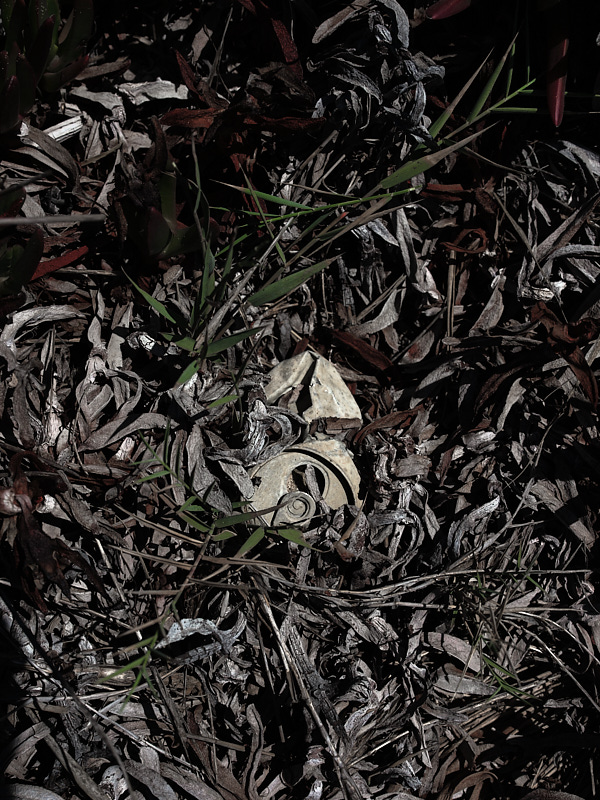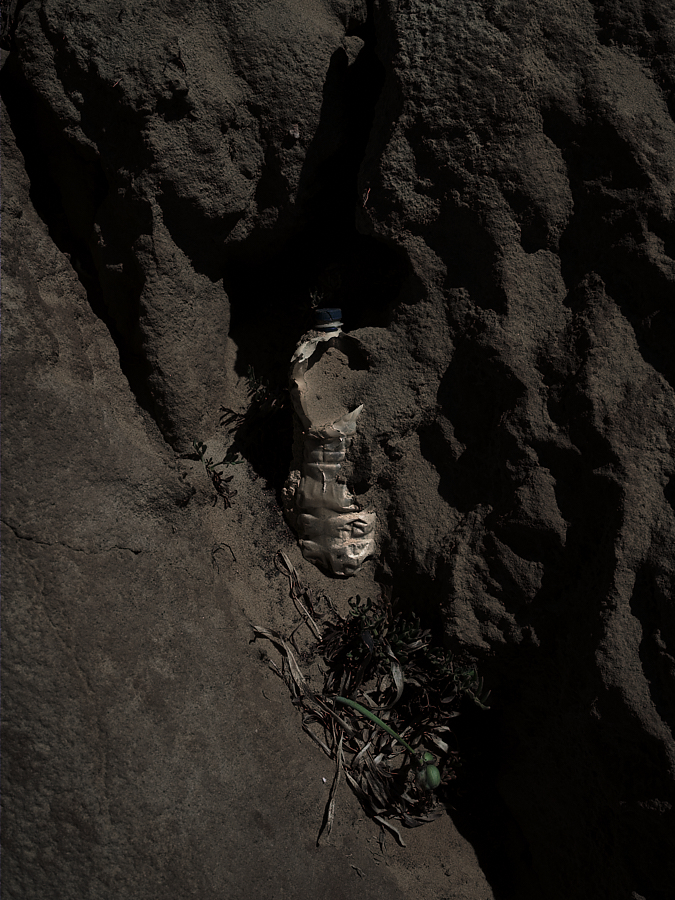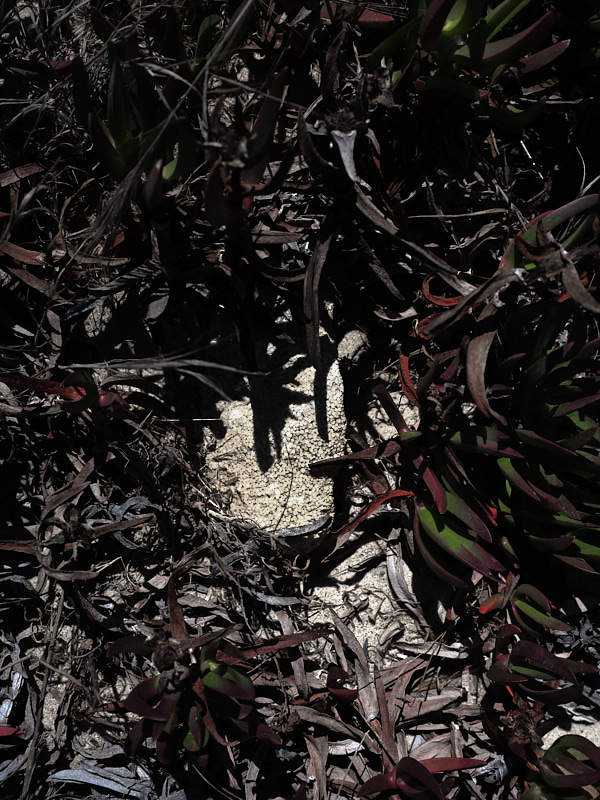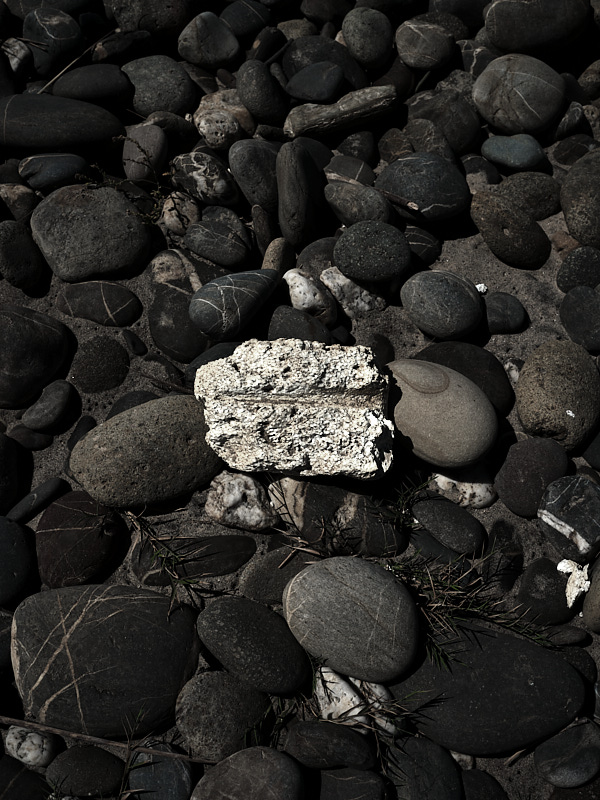Contemporary Fossils
Plastic garbage found near where I live. Abandoned pieces of plastic or those brought in by tides and currents that slowly become part of the landscape.
The coastal rocks, incorporating fragments of plastic, give birth to “techno fossils,” destined, like any fossil, to remain embedded in rock formations, perhaps as the object itself, certainly as a microplastic fragment. These are artifacts of human production, which, due to the durability and resistance of the materials they are made of – plastic, metals, glass, and others – persist on Earth, undergoing a stratification process in natural environments as well as in landfills.
Moreover, as a consequence of large-scale mass production and simplification, in addition to being durable, our artifacts are quantitatively overwhelming. Their production has experienced a surge in the last century. It is precisely the materials that differentiate techno fossils from classical fossils because these substances decompose and degrade much more slowly than other organic matter.
Just as scientist now examine past artifacts to study ancient civilizations, future scholars will make hypotheses about our way of life and our relationship with nature based on what we leave behind. Techno fossils (plastic, concrete, etc.) will be used to reconstruct and infer about our geological era, the Anthropocene.
The study of Techno Fossils offers a unique perspective on human history and our era, prompting us to reflect on the choices we make as a society and their impact on future generations.
